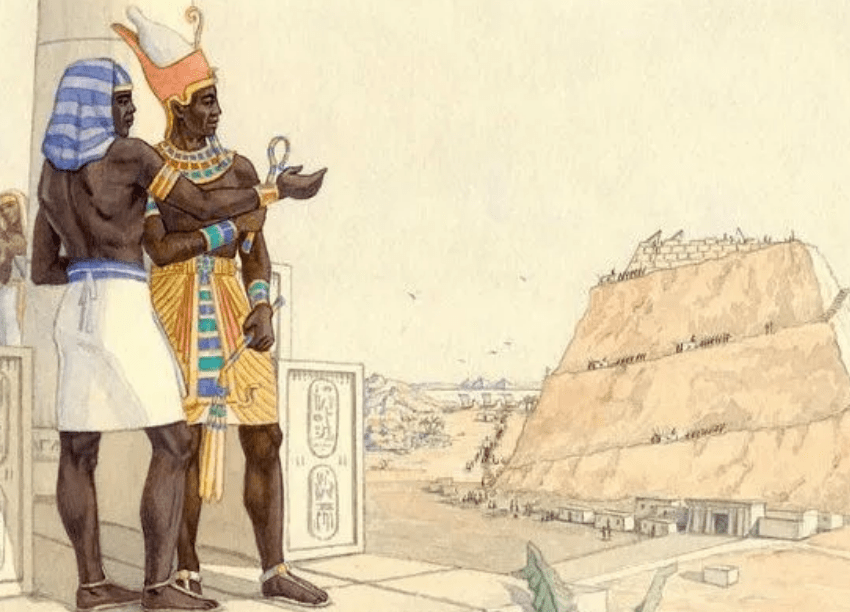By Islam Salah
The Middle East is home to some of the most remarkable architectural achievements in history. From the towering pyramids of Egypt to the majestic palaces of Persepolis, many of these masterpieces were made possible by the vision and skill of ancient architects.
Let’s spotlight some of the most influential ancient architects from the region whose work continues to inspire modern architecture today!
Imhotep: The First Architect
Imhotep, an ancient Egyptian polymath, holds the title of the world’s first known architect. His most famous work, the Step Pyramid of Djoser, was a feat in stone construction.
Before the architect’s innovation, Egyptian tombs were simple mastabas, but Imhotep’s pyramid transformed the burial complex into a monumental structure that would influence Egypt’s architectural designs for centuries.
His legacy extends beyond the pyramid, as he is also remembered for his advancements in medicine and engineering, making him one of history’s earliest Renaissance men.
Apollodorus of Damascus: Master of Roman Engineering
Hailing from Syria, Apollodorus of Damascus was one of the most influential architects in the Roman Empire. His architectural prowess is best seen in the design of the Pantheon in Rome, with its iconic dome and oculus that still stands as a marvel of ancient engineering.
Apollodorus also designed the Trajan Bridge over the Danube, a structure that was considered an engineering marvel of its time. His ability to blend functionality with aesthetic appeal made him a key figure in Roman architecture, shaping the future of monumental design.
Mimar Sinan: The Ottoman Master
Mimar Sinan, an Ottoman architect born in the 16th century, is widely regarded as one of the greatest architects in history. His crowning achievement, the Suleymaniye Mosque in Istanbul, remains one of the most impressive structures in the Islamic world.
Sinan’s designs combined the architectural styles of both the East and West, creating harmonious spaces that celebrated the grandeur of the Ottoman Empire.
His work, which included bridges, mosques, and palaces, not only defined Ottoman architecture but also influenced architectural design across Europe and the Middle East.
Darius the Great: Architect of Persepolis
Though best known as the Persian king who expanded the Achaemenid Empire, Darius the Great was also a key figure in the development of the monumental city of Persepolis.
Under his reign, the construction of Persepolis began, with its grand palaces, ceremonial halls, and intricate reliefs that showcased the might of the Persian Empire.
Darius’s architectural vision laid the foundation for one of the most impressive cities of the ancient world, influencing Persian and global architecture for generations.
Al-Mansur: Visionary of Baghdad
While often known as the Abbasid caliph who founded Baghdad, Al-Mansur was also a pivotal architect in the city’s creation. In the 8th century, he oversaw the construction of the Round City of Baghdad, which was designed as a circular urban center with a central palace at its heart.
This layout not only served as a political and cultural hub but also reflected Al-Mansur’s vision of a city that embodied the ideals of Islamic civilization. His contributions to urban planning set a precedent for future cities in the Islamic world.
A Lasting Legacy
These architects were not just builders; they were visionaries who left a significant mark on the architectural landscape. Their work continues to influence the way we think about design, structure, and urban planning.
From Imhotep’s pioneering pyramids to Al-Mansur’s urban planning and Sinan’s harmonious designs, their creations reflect the region’s ingenuity.
WE ALSO SAID: Don’t Miss…Ancient Palaces of the Region: A Journey Through Time and Architecture



